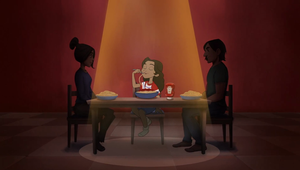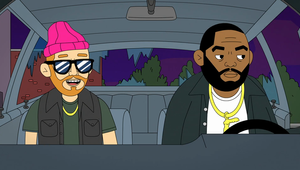
The Legend of Vox Machina: From Tabletop Game to Chart-Topping Animated Series

For the uninitiated, Critical Role is a Dungeons and Dragons web series that sees a group of voice actors role-play through a campaign, created by the dungeon master - and fellow voice actor - Matthew Mercer. There have been several campaigns (or ‘series’, for us table-top muggles) in Critical Role’s history, all of which can be viewed on YouTube or listened to as podcasts, following a team of seven voice actors who are - in essence - improvising their reactions to story events, conflicts and interactions with non-playable characters, whilst the dungeon master builds a world and story for them to explore.
Critical Role’s first campaign premiered on March 12, 2015, consisting of a whopping 115 episodes before concluding over two years later in October 2017, not to mention the story actually starts in media res of an existing campaign that the group were already playing recreationally for years prior. This first campaign followed a team of seven adventurers called Vox Machina - voice actors playing characters such as a gnome cleric, two half-elves and a goliath barbarian – exploring the continent of Tal'Dorei. The skill of Mercer’s storytelling and worldbuilding, combined with the obvious benefits of a role-playing cast of professional voice actors made Critical Role an extremely successful product, spawning multiple other campaigns and spin-offs, even branching out into graphic novels.
Now, five years after the first campaign’s conclusion, and following the most funded Kickstarter project for a film/animation in history (beating its $750,000 target with a record-setting $11.3mn) animation studio Titmouse and Amazon Prime have turned the campaign that started it all into an animated series. The show premiered this January to critical acclaim, sitting at 100% on Rotten Tomatoes and receiving praise from existing fans, new fans and critics alike. With the original cast reprising their roles, but now with beautiful new character designs, artwork and animations, Critical Role’s success seems to be continuing and the show has already been commissioned for a second season.
To go behind the scenes on how the Vox Machina campaign was turned into a hugely popular animated series, LBB’s Ben Conway spoke with the animation company working on the series, Titmouse. Art director Arthur Loftis and supervising director Sung Jin Ahn discussed being fans of Critical Role, animating on a crowd-funded project and working closely with Matthew Mercer and the show’s ‘impressively deep’ lore.
LBB> When did Titmouse become involved in the project? Had you heard of Critical Role before - were you fans?
Arthur> I was already a big fan, having watched most of the Vox Machina campaign. Sung Jin tapped me to work on the original Kickstarter trailer, and I painted some of our first versions of Emon and the throne room, but that was the extent of my role at the time. I was so excited to see the show that I watched for hundreds of hours brought to life with animation, so I decided to personally support the Kickstarter. I had no idea at the time that I'd be asked to join the production, much less art direct it.
Sung Jin> I became involved during the Kickstarter Campaign, I was not familiar with Critical Role prior to that. But I am definitely aware now.
LBB> How long was the production process? How did you find it working with the Critical Role team?
Arthur> Working with the Critical Role cast and Brandon Auman who all are executive producers on the series has been a uniquely creative experience for the whole team. Having direct access to the creators of a beloved property like this, and riffing off of their world building ideas and expanding upon them is the dream job of most designers. I was constantly impressed by the depth of their thinking behind every location and character. One of my favourite examples from an early meeting was discussing how Brimscythe, one of our first monsters, would be characterised in animation. Matt Mercer, the DM of the campaign, executive producer and cast member of Vox Machina, gave us such a clear idea of how bestial versus how intelligent he imagined the dragon would be, by literally acting out some of its movements (much like he does during their games). It's a unique advantage.
Sung Jin> We spent a good six months visual developing, and almost two years in production. Working with the Critical Role team was always a joy. And they gave us lots of detail and inspiration to work with. It totally felt like an art jam session with friends.

LBB> How did the source material impact creative decisions? How much inspiration was taken from descriptions and details from the Critical Role series - and also from DnD art, lore and design more generally?
Arthur> We tried to honor as much of the written and spoken source material as accurately as possible. I kept the Tal'dorei campaign guide by my side throughout the development process, and between that and direct access to Matt, we had an usually detailed picture of the world we were building, down to population density and racial diversity by city. You could probably build an MMO with the depth that Matt has gone to in fleshing out this world, and we took full advantage. With that as our base, we played with different ways to organise each location into something that would be visually appealing while servicing the story we were telling. For example, Emon is broken up into multiple districts in the campaign guide, but we only see that from the point-of-view of the map in the original game. Knowing we would actually follow characters through the city, we started by thinking about what the city looks like from the front gate, and built it up from there. That's the most exciting thing about the whole process -- putting yourself in the shoes of an actual character in Matt's world and thinking about what you would see around you.
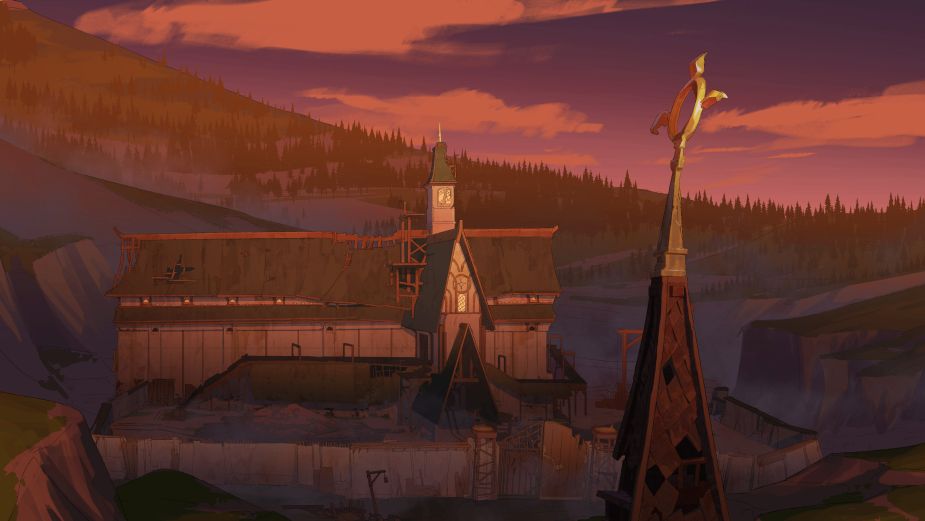
LBB> How much did the graphic novelisation of the story advise the creation of the animated series - did the art style crossover and influence the animation?
Arthur> While we were aware of some of the takes other artists had in the comics for Vox Machina, Phil's designs for them are completely fresh and a product of his unique design sensibilities. Likewise for the backgrounds, we really tried to do something new with the world, including playing with the design (and size) of certain landmark buildings that would surprise and excite the fans.
Sung Jin> We didn’t reference the graphic novels that much. I felt the animated adaptation should feel like a whole new perspective of the Vox Machina story.
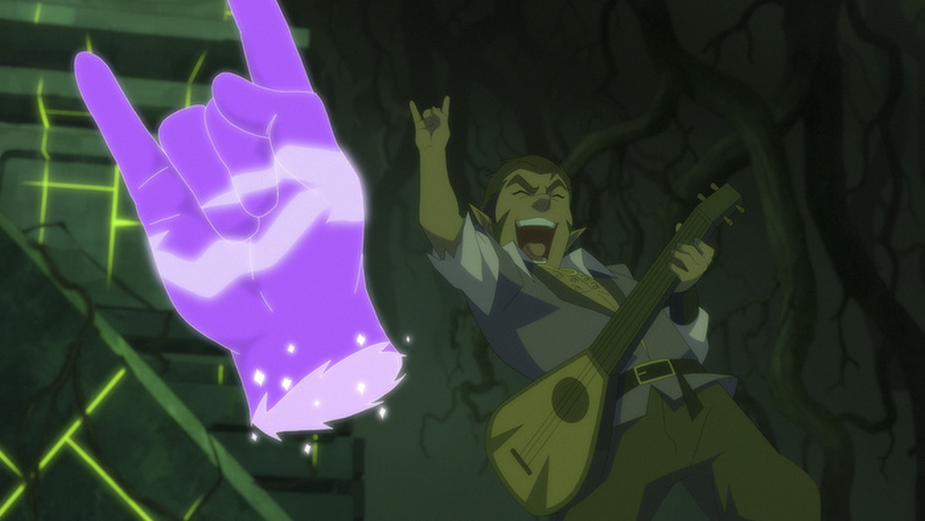
LBB> What are some of your favourite character/monster designs in the series? And what were some of your favourite scenes to animate or design?
Arthur> The wraiths in episode four were very exciting to design, and probably one of the most collaborative monster designs in the show. Phil, Sung Jin and I passed ideas back and forth, not just regarding the shape and structure of the ghosts, but also the mechanics of how they would phase through materials and how that might change the way they attack people. I think we're all very happy with how they came out, and big shout-out to our friend Shaun O'Neil, character designer, for bringing the final version of the designs home.
LBB> The project was made possible through Kickstarter - what does it mean when you’re working on a project that is directly funded by a passionate fan base? Is there added pressure to succeed?
Arthur> There's nothing more satisfying than knowing the fans made this project possible and that we're really working for them at the end of the day. I count myself among them, as do several other people on our team. As fans, I think we all push ourselves daily to do something that would make us excited to see this unique version of the Vox Machina story.
Sung Jin> It is very inspirational to know that this project was funded by the passion and love of the community. It makes this the most important project I ever worked on. And definitely does add pressure, because the fans are the most important audience to us. But it is a welcome pressure that pushes me every day.
LBB> Titmouse has worked on adult animation series before, like The Venture Bros. - what are the benefits and freedoms you get creatively when working on an animation for an adult audience? What opportunities did this give you in the Legend of Vox Machina?
Arthur> Personally, I think it's a huge bonus for the crew to work on something that they might watch themselves, and that's definitely the case with Vox Machina. You can feel the love our team has for the show come through in every shot.
Sung Jin> Working on an adult rated series really opens up more storytelling nuances and the visuals that can be very dramatic. Instead of making sure if the story is clear or simple enough for the audience, I can focus on if the story is engaging/complex enough for the audience. To really get the audience ingrained into the world, the characters, and the experiences that the characters themselves go through.
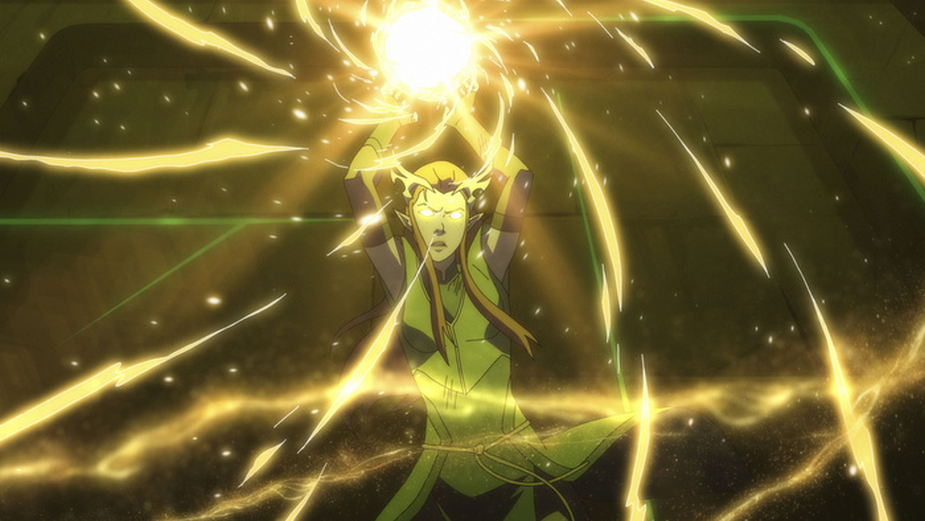
LBB> Would you be open to working on more adaptations of Critical Role’s campaigns?
Arthur> Yes! I love the Mighty Nein as well! I often think about how we would design the Ball Eater if given the chance.
Sung Jin> Most definitely. My phone is open 24/7, 365 days of the year.
LBB> What was the most challenging part of the project - and how did you overcome it?
Arthur> This show is massively ambitious in a way that I think is immediately visible on screen. Juggling an ensemble cast is already tough, and we pushed ourselves to make this the most beautiful rendition of the source material that we could. It goes without saying that every job in the world was made more complicated when the pandemic hit, and we had to find interesting ways to keep the team in contact with each other. Without going into too much detail on the production end of things, I will mention that our amazing production staff found some great ways to bring us together. Our design coordinator, Kay Tinder, interviewed me and Sung Jin while we ate hot wings. We also hosted a few online tabletop RPG sessions throughout the production.
Sung Jin> The scope of the story and how many main characters we had to track was very challenging. As that directly affects the amount of animation that can be done. Having one or two characters fight a villain is one thing, but having seven characters take on a villain is an olympic-sized task.

LBB> Anything else you would like to add?
Arthur> Thank you for watching the show. Keep your eye out for those easter eggs! The crew loves seeing fans post their sightings online.
Sung Jin> Thank you to all the Critters and the new fans for enjoying this show. We hope they feel as much passion from our dedication on this show, as we did from them.












